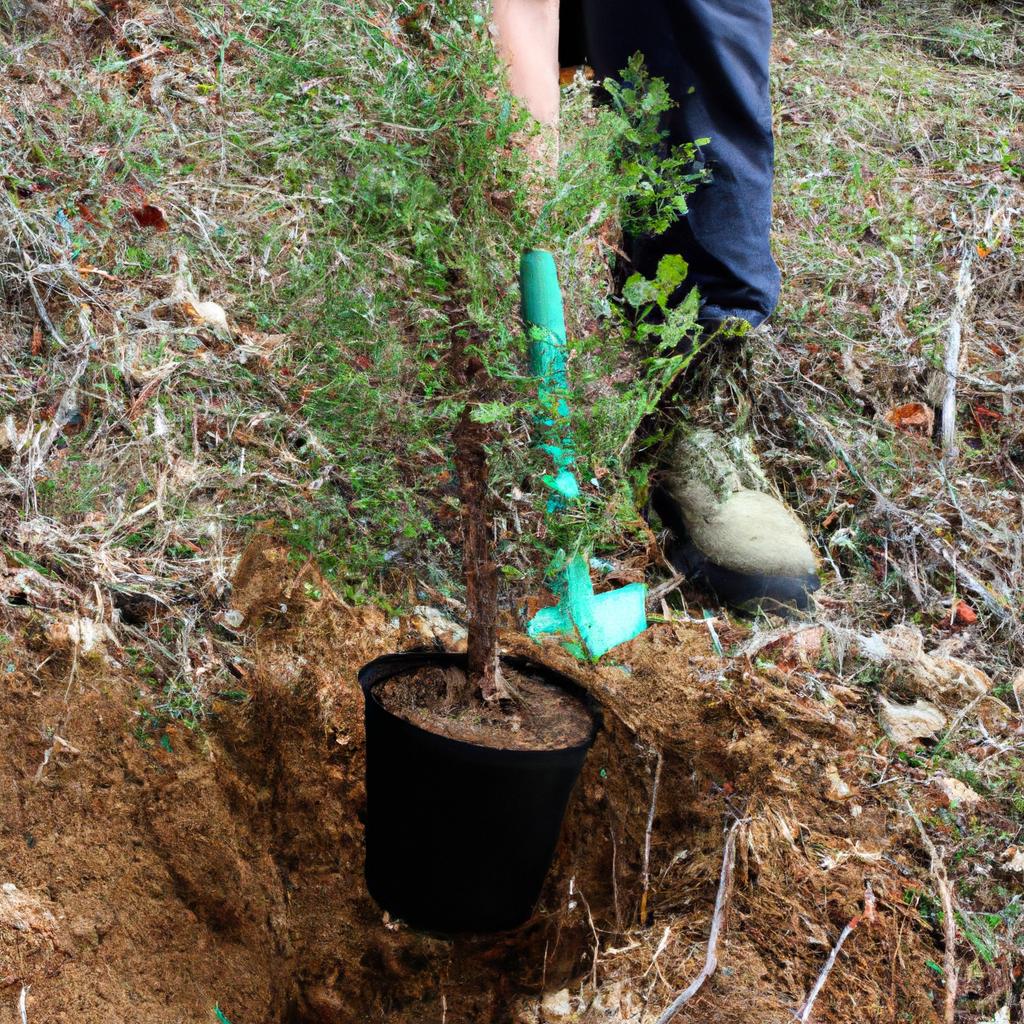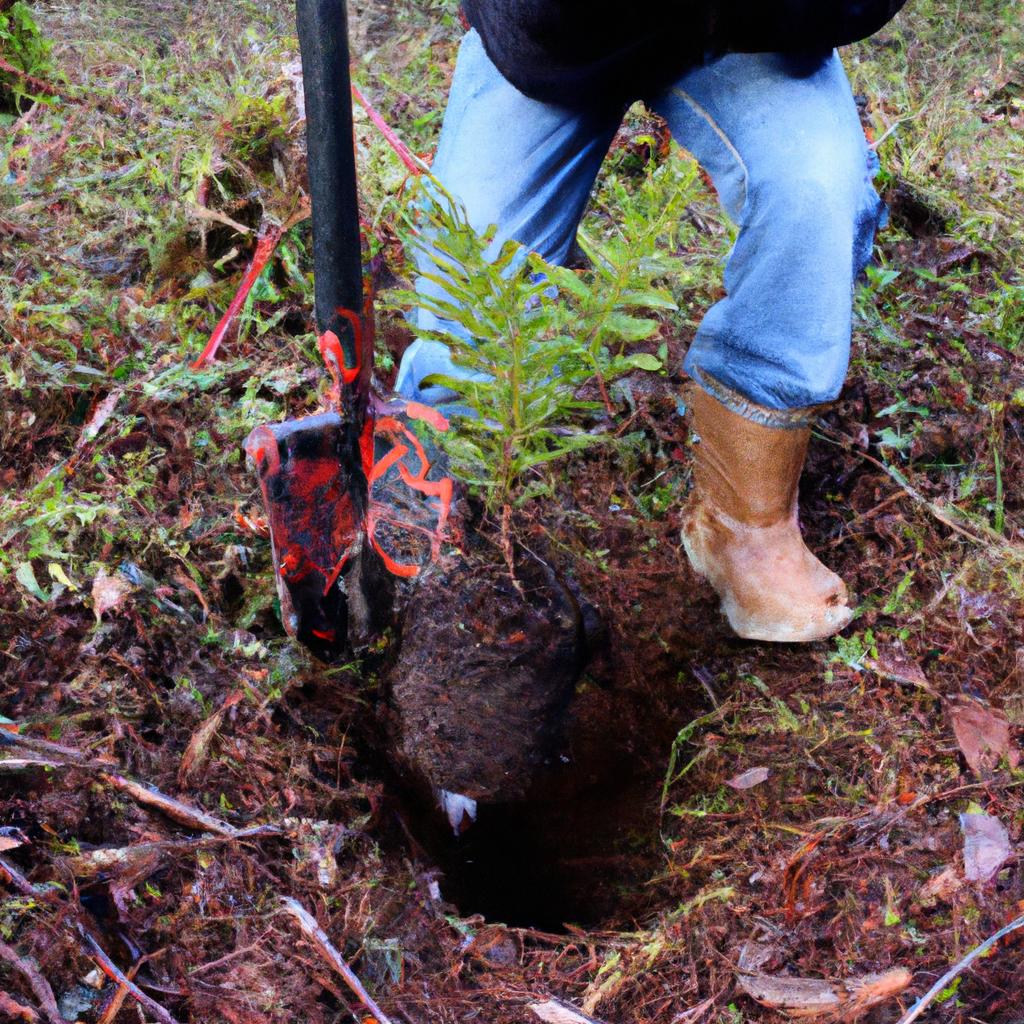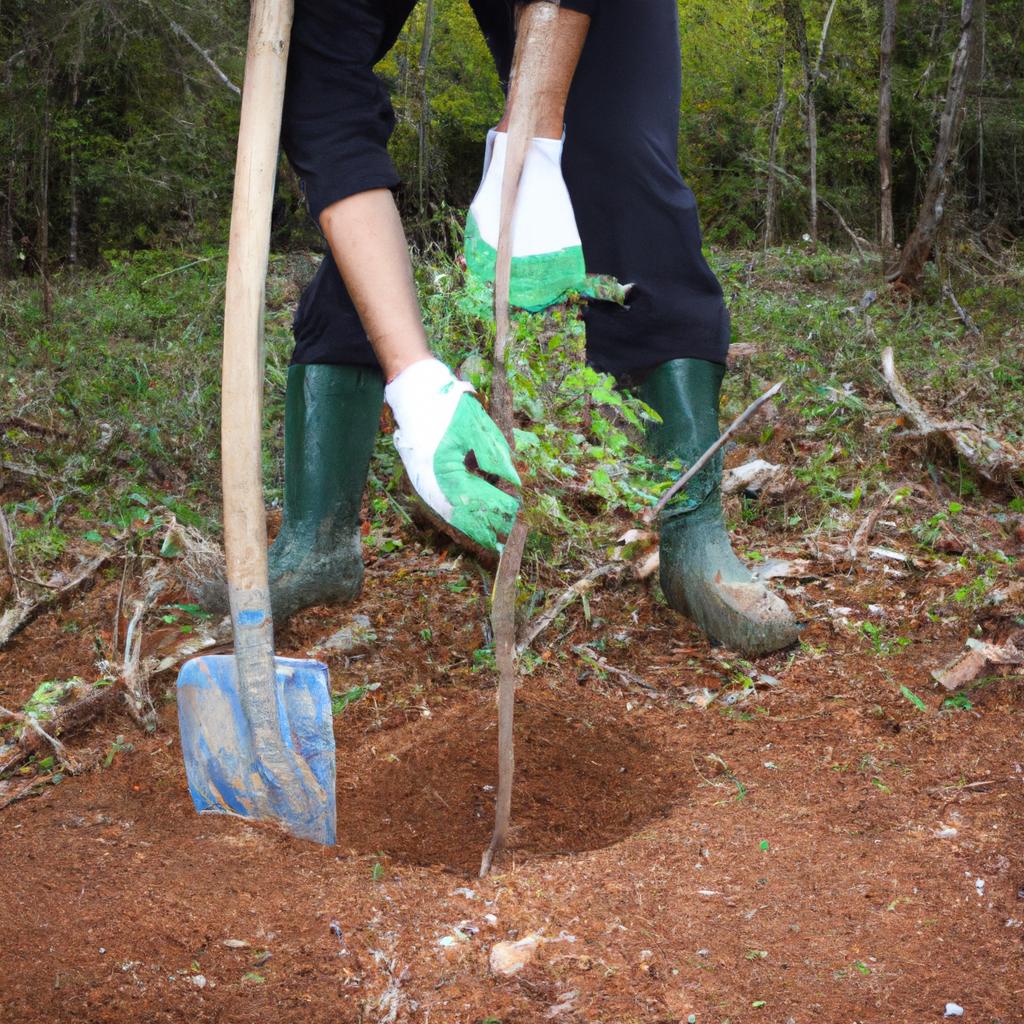Biodiversity, a critical component of our planet’s ecosystems, plays an essential role in maintaining ecological balance and ensuring the sustainability of life on Earth. Its vast array of species provides numerous benefits to humans, including food security, medicinal resources, and climate regulation. However, despite its significance, biodiversity is under threat due to various anthropogenic activities such as deforestation, habitat destruction, pollution, and overexploitation. Consequently, there is an urgent need for environmental education programs that emphasize the importance of biodiversity conservation and promote sustainable practices.
For instance, imagine a hypothetical scenario where a local community heavily relies on fishing as their main source of livelihood. Over time, due to unsustainable fishing practices driven by ignorance about the impact on marine ecosystems and lack of knowledge about alternative methods or technologies to minimize harm caused by these practices, fish populations start declining rapidly. As a result, not only does this lead to economic hardships for the community but also disrupts the delicate balance within the ecosystem. This example highlights how limited understanding about biodiversity can have severe consequences both socioeconomically and environmentally. Therefore, it becomes imperative to incorporate comprehensive educational initiatives that raise awareness about biodiversity issues while promoting sustainable actions among individuals and communities.
In light of these challenges posed by diminishing biodiversity and increasing human activities, it is important to implement strategies that address these issues and work towards biodiversity conservation. Here are a few potential approaches:
-
Environmental Education: Creating educational programs that focus on the importance of biodiversity and its conservation can help raise awareness among individuals of all ages. These programs can be implemented in schools, community centers, and through online platforms to reach a wider audience.
-
Sustainable Practices: Encouraging sustainable practices at both individual and community levels is crucial for preserving biodiversity. This includes promoting responsible consumption, reducing waste, using renewable energy sources, and adopting eco-friendly agricultural practices.
-
Conservation Efforts: Supporting and participating in local conservation initiatives can make a significant impact on preserving biodiversity. This could involve volunteering for habitat restoration projects, supporting protected areas, or engaging in citizen science programs to monitor species populations.
-
Policy Changes: Advocating for stronger environmental policies at the local, national, and international levels can help protect biodiversity. This may include advocating for stricter regulations on deforestation, pollution control measures, and sustainable resource management.
-
Collaboration: Facilitating collaboration between different stakeholders such as governments, NGOs, scientists, communities, and businesses is essential for effective biodiversity conservation efforts. By combining expertise and resources from various sectors, more comprehensive solutions can be developed.
Overall, addressing the threats to biodiversity requires a multi-faceted approach involving education, sustainable practices, conservation efforts, policy changes, and collaborative action. By working together towards this common goal of preserving our planet’s rich biological diversity, we can ensure a sustainable future for generations to come.
The Importance of Biodiversity in Education
Biodiversity, the variety of life forms on Earth, plays a crucial role in shaping our environment and sustaining ecosystems. Understanding its importance is essential for environmental education programs aiming to foster sustainability. To illustrate this significance, let’s consider a hypothetical case study: a school located near a diverse ecosystem with abundant flora and fauna. By incorporating biodiversity into their curriculum, educators can provide students with valuable knowledge and skills necessary to become responsible stewards of their natural surroundings.
One compelling reason to prioritize biodiversity in education is its intrinsic value. Each species has unique characteristics that contribute to the overall complexity and beauty of nature. Encouraging students to appreciate the vast array of life forms fosters empathy towards all living beings, promoting respect for other species and their habitats. By recognizing the inherent worth of every organism, individuals are more likely to develop a sense of responsibility towards conserving biodiversity.
Moreover, incorporating biodiversity into education offers numerous practical benefits. Students gain an understanding of ecological interdependencies and learn how different organisms rely on one another for survival. This knowledge equips them with the ability to analyze complex systems and identify potential threats or imbalances within ecosystems. Additionally, by studying local biodiversity, students develop a stronger connection to their immediate environment, fostering a sense of place-based identity and encouraging community engagement in conservation efforts.
To evoke an emotional response from the audience regarding the importance of biodiversity in education:
- Loss of habitat: Imagine witnessing firsthand the destruction caused by deforestation as countless animal species lose their homes.
- Impact on food security: Picture farmers struggling due to declining pollinator populations affecting crop production.
- Threats to medicine: Consider the potential loss of undiscovered plant species that could hold cures for diseases.
- Disruption of cultural heritage: Reflect upon indigenous communities facing displacement as their traditional lands are destroyed.
In addition to these emotional appeals, visual representation can be impactful. Consider the following table showcasing the interconnectedness and consequences of biodiversity loss:
| Consequences of Biodiversity Loss | Examples |
|---|---|
| Reduced ecosystem resilience | Increased vulnerability to climate change, natural disasters |
| Disruption of nutrient cycling | Soil degradation, decreased agricultural productivity |
| Decline in pollination services | Lower crop yields, reduced floral diversity |
| Loss of cultural heritage | Traditional knowledge and practices at risk |
By incorporating these emotional appeals and visual representation into environmental education programs, educators can evoke a sense of urgency within students and inspire them to take active roles in preserving biodiversity.
Transitioning seamlessly into the subsequent section about “The Role of Biodiversity in Ecosystems,” it is evident that understanding the importance of biodiversity is crucial for comprehending its role in sustaining ecosystems. By delving deeper into this subject matter, we can explore how changes in biodiversity impact ecological processes and functions essential for maintaining balance within our planet’s intricate web of life.
The Role of Biodiversity in Ecosystems
Understanding the importance of biodiversity in education lays the foundation for comprehending its role within ecosystems. By exploring how different species interact and depend on one another, we gain valuable insights into the delicate balance that sustains life on Earth.
The intricate web of relationships between organisms within an ecosystem is exemplified by the symbiotic partnership between bees and flowers. Bees, as they collect nectar to produce honey, inadvertently transfer pollen from flower to flower, enabling cross-pollination and plant reproduction. This mutualistic relationship not only benefits both parties involved but also contributes to the overall stability and resilience of the ecosystem.
To fully grasp the significance of biodiversity within ecosystems, it is essential to consider various aspects such as:
- Species Interdependence: Different species rely on each other for food, shelter, and other resources. Disruptions or declines in certain populations can have cascading effects throughout the entire ecosystem.
- Trophic Levels: Organisms are organized into trophic levels based on their position in a food chain or web. Each level serves a specific function and plays a vital role in maintaining energy flow and nutrient cycling.
- Habitat Diversity: Diverse habitats provide niches for a wide range of species with varying needs and adaptations. Protecting these habitats ensures the preservation of unique ecological communities.
- Ecological Services: Biodiversity provides numerous services critical for human well-being, including pollination, water purification, climate regulation, soil fertility maintenance, and disease control.
Table showcasing examples of ecological services provided by biodiversity:
| Ecological Service | Example |
|---|---|
| Pollination | Bees visiting flowers |
| Water Purification | Wetlands filtering |
| Climate Regulation | Forests sequestering CO2 |
| Soil Fertility | Decomposers breaking down organic matter |
| Disease Control | Predators regulating pest populations |
Understanding the role of biodiversity in ecosystems goes beyond mere appreciation; it shapes our approach to conservation and sustainable practices. By recognizing the intricate interconnections within habitats, we can develop strategies that promote coexistence with nature, safeguarding precious ecological systems for future generations.
Transition into subsequent section:
Building upon this understanding, the next section will explore effective biodiversity conservation strategies that have emerged as crucial steps towards preserving Earth’s remarkable array of life forms.
Biodiversity Conservation Strategies
Having explored the crucial role biodiversity plays in maintaining the delicate balance of ecosystems, we now turn our attention to effective strategies for conserving and preserving this invaluable resource. By implementing targeted conservation efforts, society can ensure the continued existence of diverse species and their habitats.
Conservation initiatives are essential for safeguarding biodiversity and promoting sustainable practices. To illustrate the importance of such strategies, let us consider a hypothetical scenario involving a vulnerable species – the Blue Whale (Balaenoptera musculus). Overhunting and habitat degradation have severely impacted its population size, pushing it towards extinction. In response to this crisis, several key conservation strategies have been identified:
- Habitat Protection: Establishing protected areas that encompass critical habitats ensures undisturbed breeding grounds and feeding sites.
- Sustainable Fishing Practices: Implementing regulations on fishing methods and quotas helps prevent accidental entanglement or direct hunting of marine mammals.
- Public Awareness Campaigns: Educating communities about the significance of blue whale preservation encourages responsible behavior and support for conservation efforts.
- International Collaboration: Collaborative programs between countries facilitate information sharing, research, and coordinated action plans to protect transboundary populations.
These four strategies form an integral part of wider global efforts aimed at ensuring the survival of not only the Blue Whale but countless other endangered species as well. Conserving biodiversity requires a multifaceted approach that combines scientific knowledge with public engagement. Understanding these strategies is vital for fostering positive attitudes toward environmental stewardship.
To further emphasize the importance of biodiversity conservation, consider Table 1 below highlighting some sobering statistics:
| Total Species Count | Endangered Species | |
|---|---|---|
| Mammals | 6,400 | 1,214 |
| Birds | 10,000 | 1,469 |
| Reptiles | 9,960 | 2,274 |
| Amphibians | 7,300 | 3,301 |
Table 1: Global species counts and number of endangered species for select animal groups (data from IUCN Red List).
These numbers serve as a stark reminder of the urgent need to act in order to prevent further loss. By integrating biodiversity conservation strategies into environmental education programs and policy frameworks on a global scale, we can empower future generations with the knowledge and skills needed to address this critical issue.
Incorporating Biodiversity in Curriculum will provide educators with practical tools to instill an appreciation for nature’s diversity within students’ academic journeys.
Incorporating Biodiversity in Curriculum
Expanding upon the strategies discussed for biodiversity conservation, it is crucial to explore how these principles can be effectively incorporated into environmental education. By integrating biodiversity into curriculum content and pedagogy, educators have an opportunity to foster a deeper understanding of ecological systems and inspire future generations to prioritize sustainability.
To illustrate the significance of incorporating biodiversity in curriculum, let us consider an example where students are tasked with studying the impact of human activities on local ecosystems. Through this case study, learners engage in hands-on fieldwork, gathering data on species abundance and diversity before and after implementing conservation measures. This practical application allows them to witness firsthand the positive effects that their actions can have on preserving biodiversity.
The integration of biodiversity concepts within curricula offers several advantages:
- Enhances critical thinking skills by encouraging students to analyze complex ecological relationships.
- Fosters a sense of responsibility towards nature through experiential learning opportunities.
- Promotes interdisciplinary learning as students connect scientific knowledge with social, economic, and ethical aspects.
- Cultivates empathy and appreciation for diverse life forms by emphasizing their intrinsic value.
A table presenting the benefits of incorporating biodiversity in curriculum:
| Benefits | Description |
|---|---|
| Enhanced critical thinking | Encourages analysis of complex ecological relationships |
| Fostered sense of responsibility | Provides experiential learning opportunities |
| Promoted interdisciplinary | Connects scientific knowledge with social, economic, and ethical dimensions |
| Cultivated empathy | Emphasizes the intrinsic value of diverse life forms |
By weaving biodiversity into educational frameworks, we create spaces where students actively participate in meaningful discussions about sustainable practices. Engaging young minds through interactive lessons not only deepens their comprehension but also instills a sense of agency in conserving the natural world. The subsequent section will explore various approaches to involve students in biodiversity studies, further nurturing their connection with the environment.
Transition into subsequent section: Building upon the foundation of incorporating biodiversity within curriculum content and pedagogy, it is essential to delve into strategies that actively engage students in exploring and understanding ecological systems. Through interactive activities and collaborative projects, educators can empower learners to become stewards of biodiversity conservation.
Engaging Students in Biodiversity Studies
Section H2: Engaging Students in Biodiversity Studies
Building upon the incorporation of biodiversity in the curriculum, engaging students in biodiversity studies is vital for fostering a deep understanding and appreciation for the natural world. By actively involving students in hands-on activities and experiential learning, educators can create meaningful connections between theoretical concepts and real-world applications. For instance, imagine a group of high school students participating in a field trip to a local wetland reserve where they conduct water quality tests, identify different species of plants and animals, and analyze the overall health of the ecosystem. This immersive experience not only enhances their knowledge but also instills a sense of responsibility towards preserving biodiversity.
To effectively engage students in biodiversity studies, several strategies can be employed:
- Encourage citizen science initiatives: Involving students in ongoing scientific research projects allows them to contribute valuable data while developing critical thinking skills. They can participate in bird or butterfly counts, monitor invasive species populations, or even collaborate with researchers on long-term ecological monitoring programs.
- Promote outdoor exploration: Providing opportunities for students to explore natural environments firsthand fosters curiosity and connection with nature. Field trips to local parks, nature reserves, or botanical gardens enable students to observe biodiversity up close and develop an emotional bond with the environment.
- Utilize technology as a tool: Integrating technology into biodiversity studies offers new avenues for engagement. Virtual reality experiences can transport students to remote ecosystems otherwise inaccessible due to geographical constraints. Online platforms and apps allow them to record observations digitally and share their findings with others worldwide.
- Foster collaboration through project-based learning: Assigning interdisciplinary projects that require teamwork encourages communication skills while addressing complex environmental issues. For example, groups could design sustainable habitats for endangered species or propose solutions to mitigate human impacts on local ecosystems.
Engaging students in biodiversity studies ultimately cultivates a sense of stewardship towards our planet’s rich diversity of life forms. By actively involving young minds through citizen science initiatives, outdoor exploration, technological tools, and collaborative projects, educators empower the next generation to become informed advocates for environmental sustainability. In doing so, they lay the foundation for a future where biodiversity thrives harmoniously alongside human development.
Transitioning into Measuring the Impact of Biodiversity Education,
it is essential to evaluate how effective these engagement strategies are in instilling conservation values and promoting sustainable practices among students.
Measuring the Impact of Biodiversity Education
Engaging Students in Biodiversity Studies has proven to be an effective approach in promoting environmental education. By actively involving students in biodiversity-related activities, educators can enhance their understanding of the importance of biodiversity conservation and sustainability. Now, let us explore how measuring the impact of biodiversity education can further reinforce these efforts.
One real-life example that highlights the effectiveness of biodiversity education is a case study conducted in a high school setting. In this study, students were given the opportunity to participate in hands-on fieldwork, where they identified different species of plants and animals within their local ecosystem. Through this experiential learning process, students not only gained knowledge about various species but also developed a deeper appreciation for the intricate web of life and its interconnectedness with human well-being.
Measuring the impact of biodiversity education can provide valuable insights into its effectiveness as an educational tool. This assessment allows educators to gauge whether their methods are delivering desired outcomes and make necessary adjustments if needed. Here are some key points to consider when evaluating the impact of biodiversity education:
- Knowledge Acquisition: Assessing students’ understanding of core concepts related to biodiversity, such as ecosystem dynamics, conservation strategies, and threats to species survival.
- Attitude Shifts: Examining shifts in students’ attitudes towards nature and wildlife, including increased empathy towards endangered species and recognition of humans’ role in preserving ecosystems.
- Behavior Change: Evaluating changes in students’ behaviors concerning sustainable practices like recycling, reducing waste, or participating in community-based conservation initiatives.
- Long-term Impact: Tracking long-term engagement with biodiversity issues beyond the classroom setting by monitoring participation in related extracurricular activities or pursuing careers in fields aligned with environmental stewardship.
- Increased awareness leads to informed decisions.
- Empathy drives action towards conservation.
- Sustainable behaviors contribute to a healthier planet.
- Long-term engagement fosters lasting change.
Additionally, the following table illustrates the potential emotional impact of biodiversity education and its measurement:
| Emotion | Example Scenario |
|---|---|
| Awe | Witnessing a rare species up close in its habitat |
| Empathy | Seeing the effects of habitat destruction on wildlife |
| Concern | Understanding how climate change affects ecosystems |
| Hope | Learning about successful conservation projects |
In conclusion, engaging students in biodiversity studies serves as an effective means to promote environmental education. Measuring the impact of such educational initiatives allows educators to assess their efficacy and make necessary improvements for future implementation. By evaluating knowledge acquisition, attitude shifts, behavioral changes, and long-term impacts, we can ensure that biodiversity education plays a vital role in fostering awareness, empathy, sustainable behaviors, and lasting engagement with nature and conservation efforts.




